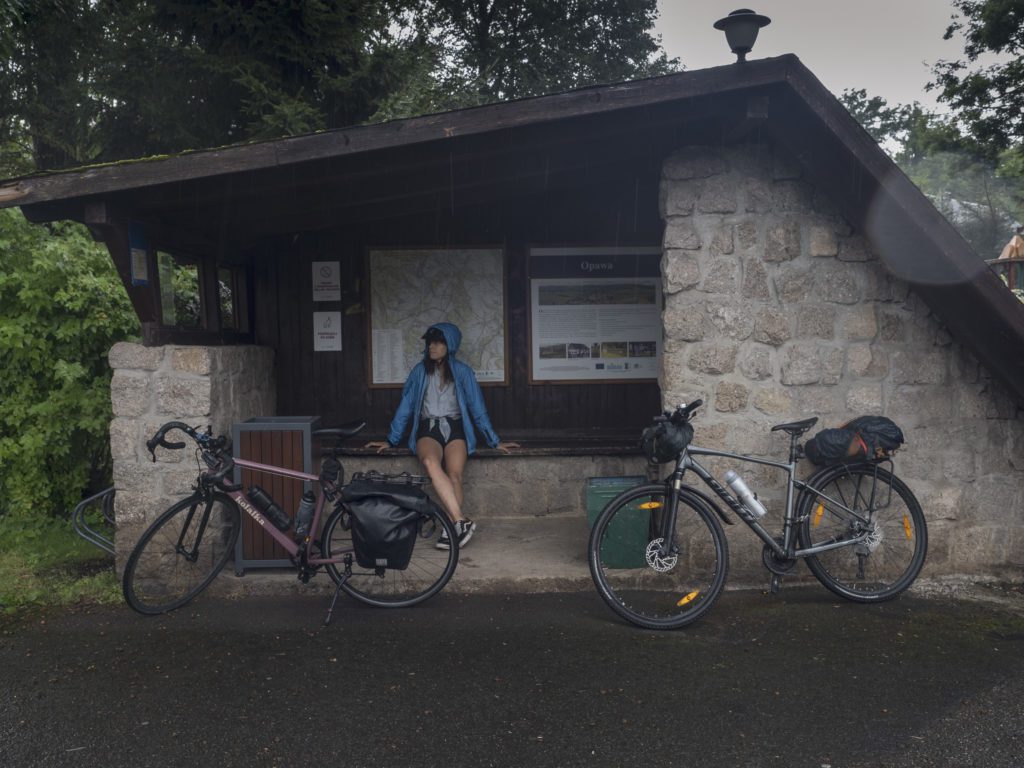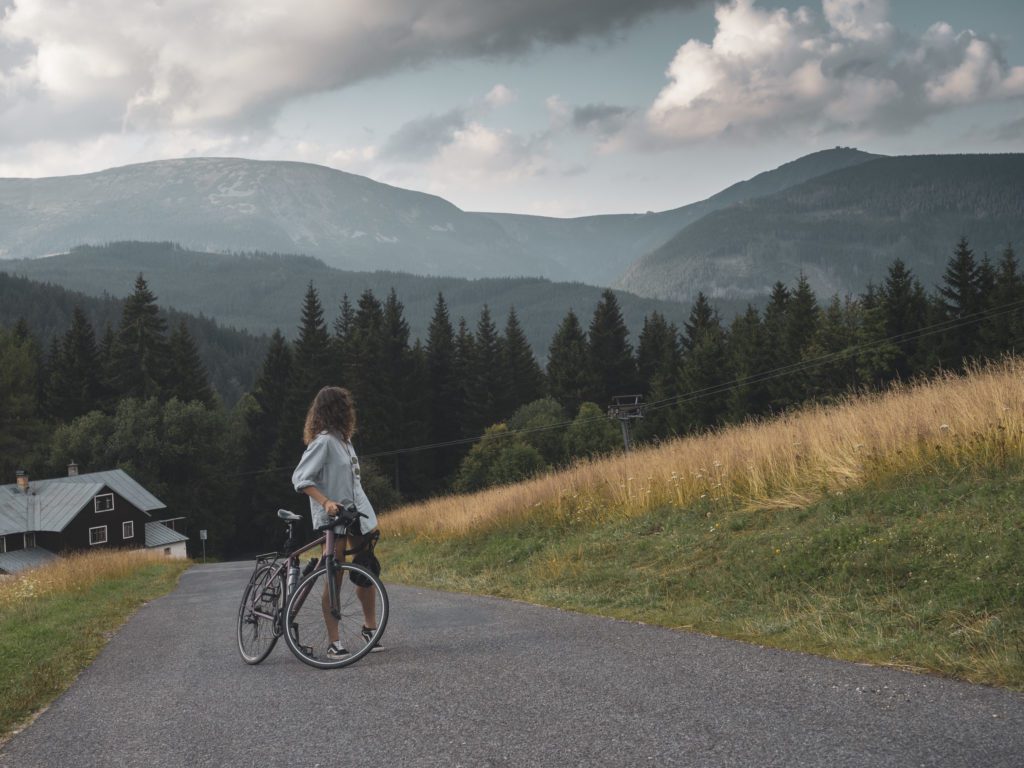With breathtaking landscapes and historical charm, Czechia is one of Europe’s most underrated cycling destinations. I recently did a weekend overnighter in the north of the country, and I can sum it up using three words: true cycling joy. From the awe-inspiring sandstone formations in Adršpach Rock City to the majestic peaks of the Giant Mountains (Krkonose), bike touring in Northern Czechia is an unforgettable adventure every outdoor enthusiast will enjoy.
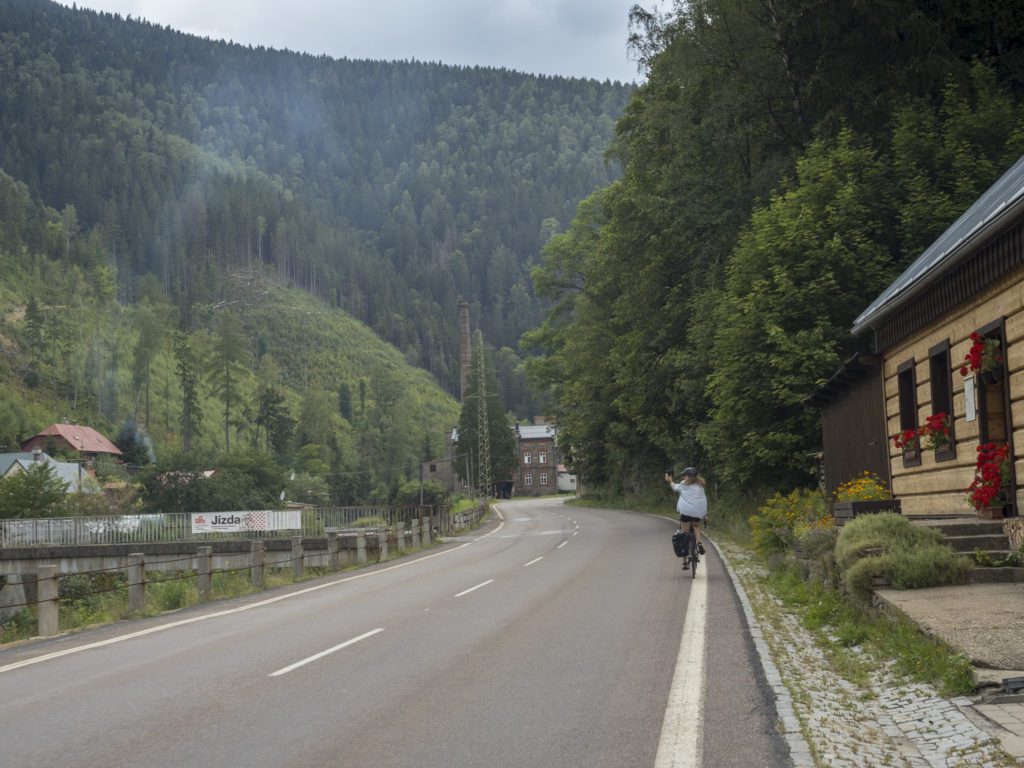
My micro-adventure in the Czech Mountains
Amazing cycling trips don’t have to be long and remote. This summer, I spent some days in the Polish Owl Mountains, working remotely from my family’s little house in the middle of nowhere.
Once the weekend came, I packed spare clothes, the essential bike gear, and my camera and, joined by Alicja – a cycling enthusiast I met through Instagram – headed toward the Czech border.
The Broumov Highlands
It was just three kilometres, but it took us a while as we had to push our bikes up a steep hill with some loose gravel on which our wheels quickly lost grip. After yesterday’s heavy rainfall, the greenery was intensely vibrant. We rolled down the road from Jeseniki, and I instantly felt like on real vacation: carefree, relaxed and focused on pedalling.
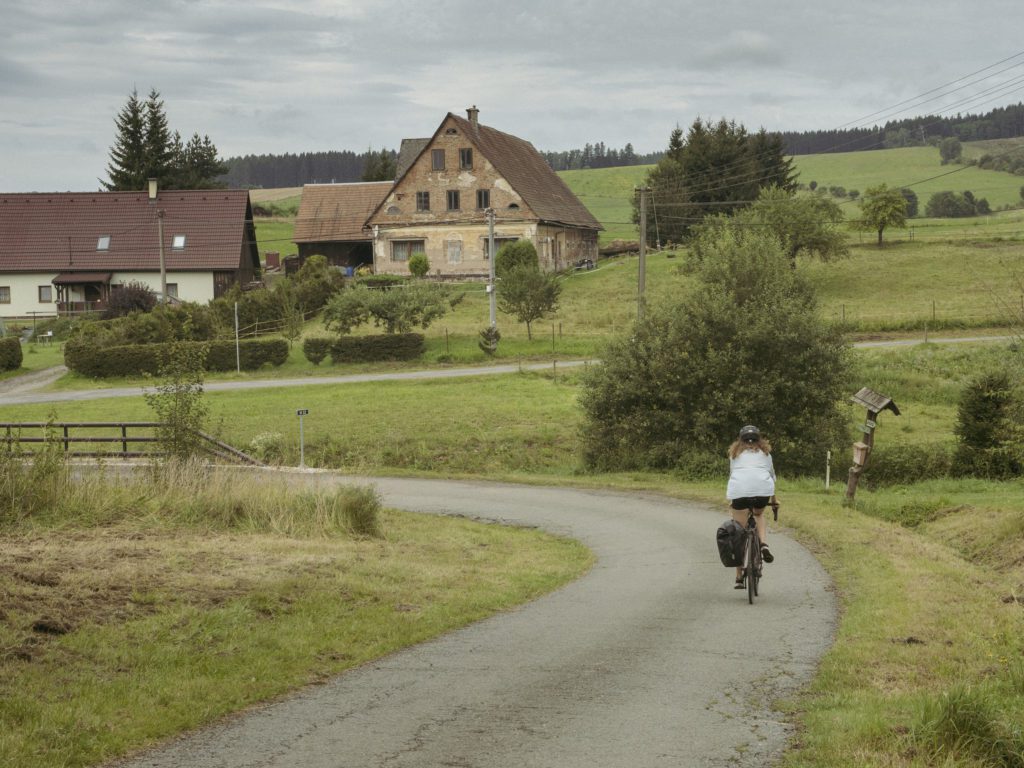
We passed through charming little towns and villages with traditional houses built with dark-painted wood, lightened up with colourful petunias and begonias on the windows. On the roadside, statues of various saints with inscriptions in German recalled the times when the Germans were the majority in the Broumov region.

After a coffee and cake break in Teplice, we had plenty of energy to pedal through the highlands. From the road, we could see a glimpse of the sandstone formations in the Adršpach and Teplice rock towns (we didn’t stop there since Alicja and I had already hiked there a while ago).
The road, meandering between the hills and crossing the train tracks once every few kilometres, gently climbed until we reached Alpské fáborky – a beautiful descent with tight hairpins and smooth tarmac through a forest. It felt like cycling in the Alps, and after speeding down, a scenic panorama unfolded in front of our eyes. The mighty Snezka mountain towered over the vibrant meadow.
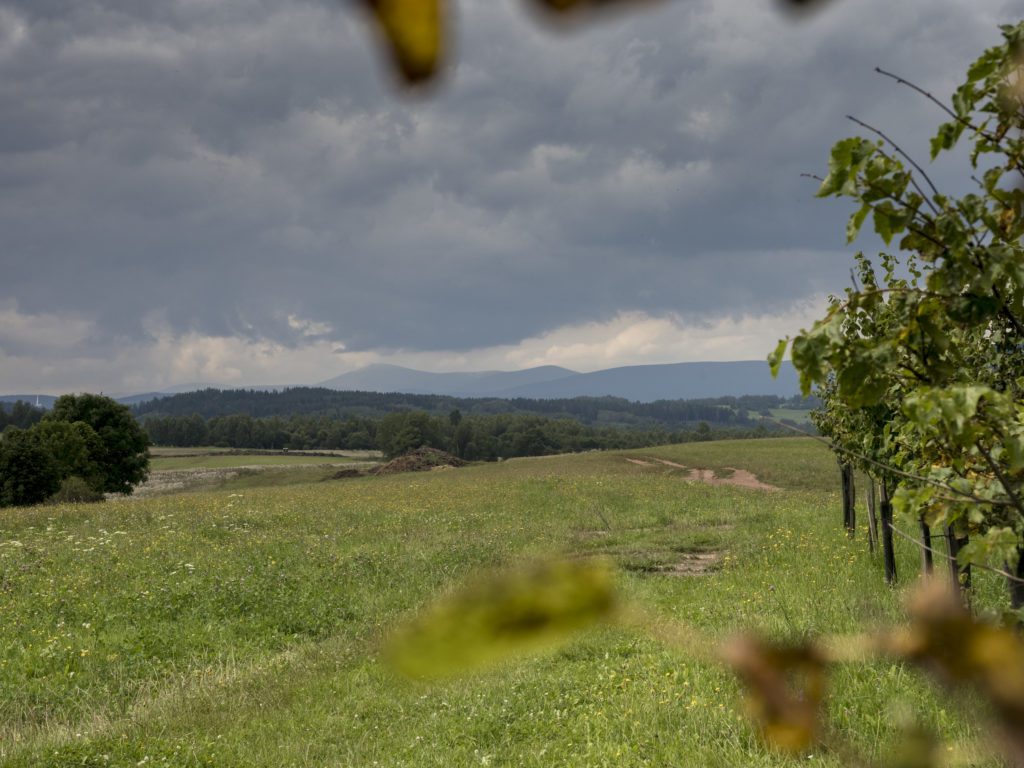
Czechia’s highest peak seemed so close, but we knew the day’s most demanding and longest climb was still ahead of us. It wasn’t steep, but I had little energy left. My legs felt heavy like lead, and my throat was itchy, as if I was getting a cold. But I had to bite the bullet and continue pedalling along the river Upa.
Arriving in the Giant Mountains
Slowly, cute mountain hotels and ski resort infrastructure replaced residential buildings. Pec was busy, with music playing in the bars and restaurants and families returning from their hikes.
We had to push the bikes up one more hill to reach our mountain hotel, with a gradient reaching 15 %. When we arrived at our destination, we knew it was worth all the effort. Sheep pastures surrounded the wooden hotel building, and we saw the peak of Snezka Mountain from the terrace. At night, we could even watch the Perseids straight from our window!
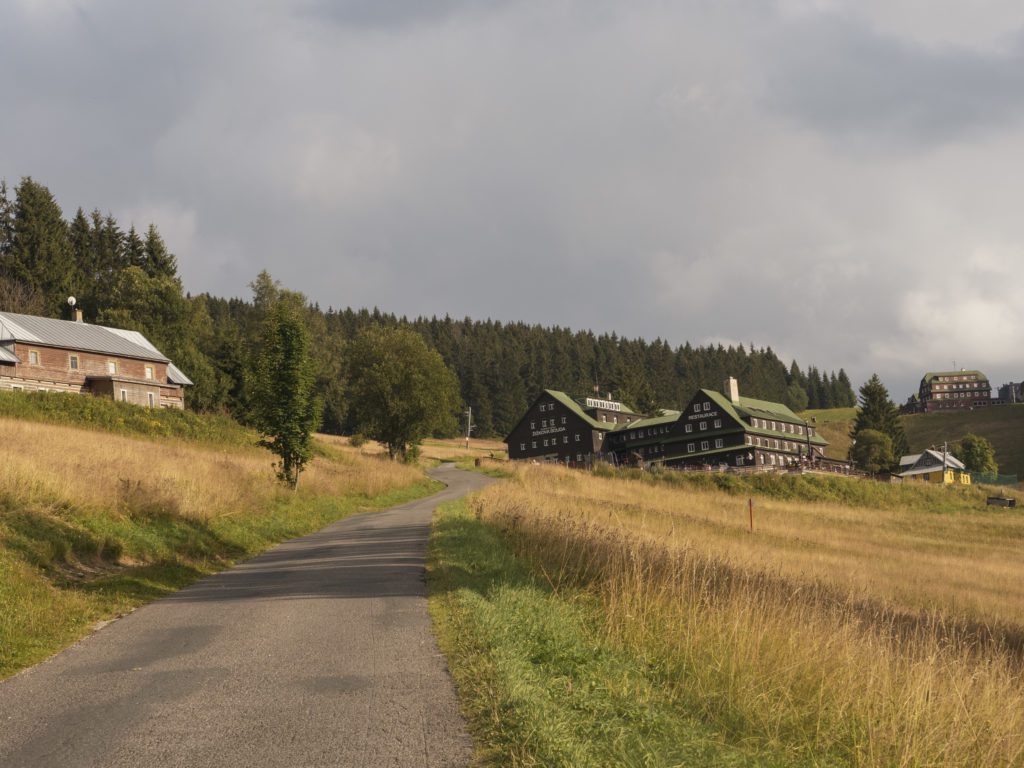
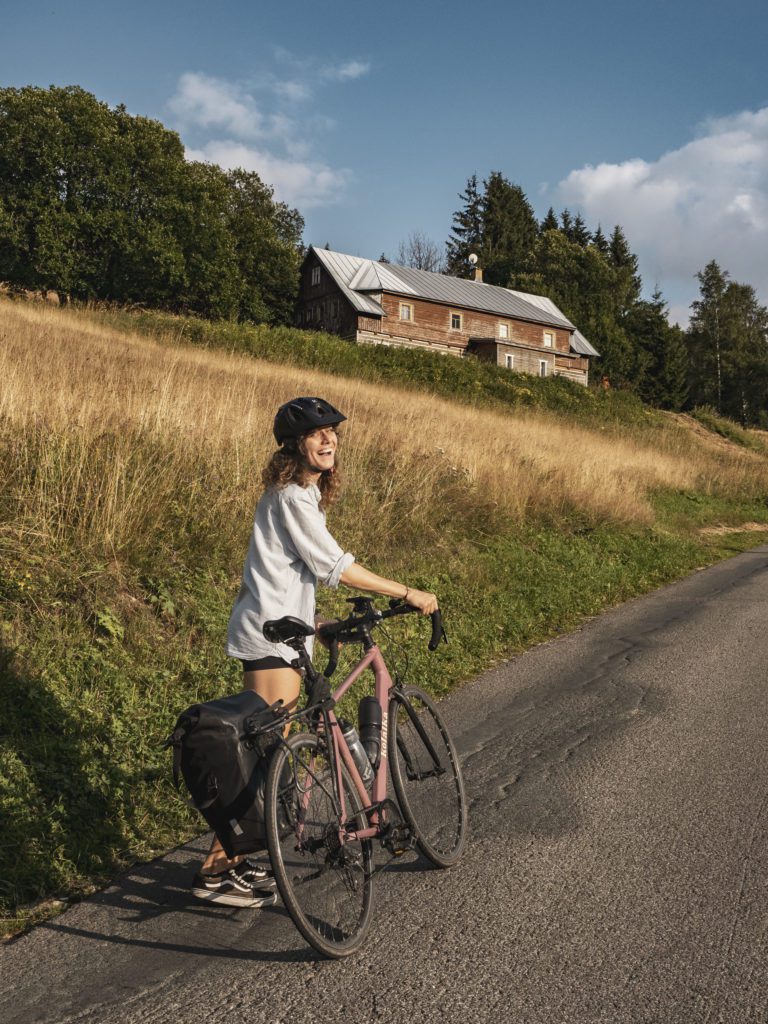
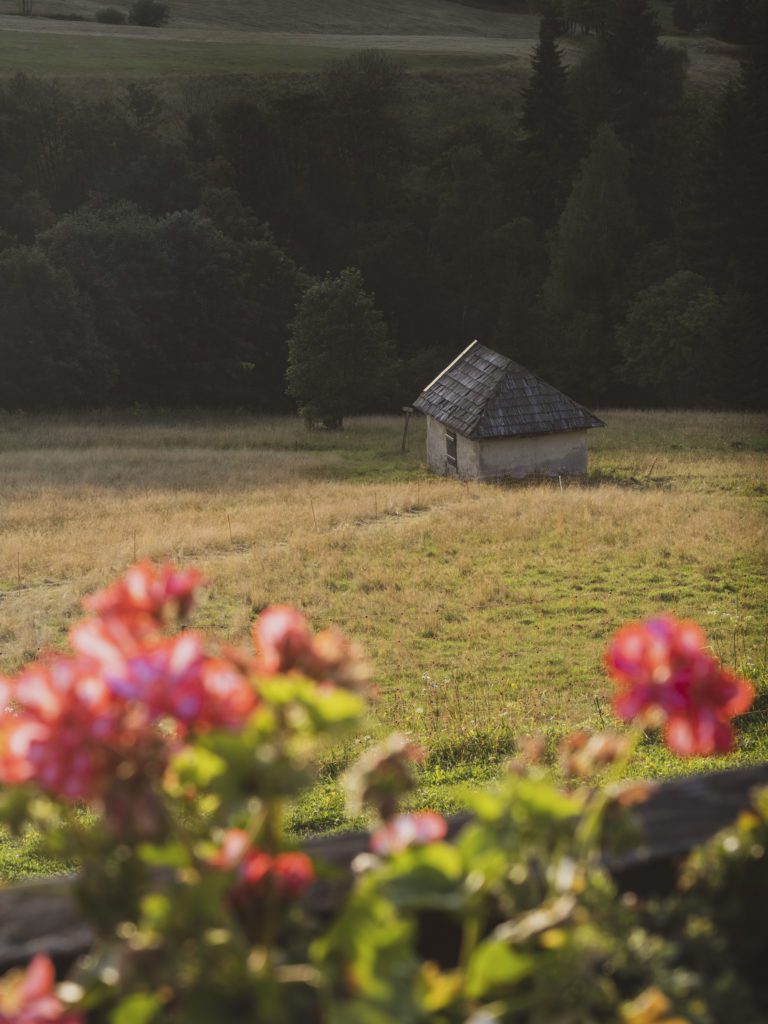
The next morning, dark clouds ominously hung over the mountains. The day started with a challenge—a sharp climb to Mala Upa. We didn’t mind pushing the bikes, though, as the views around us were breathtaking. The landscape had all shades of green, from verdant grass to dark green pine forests.
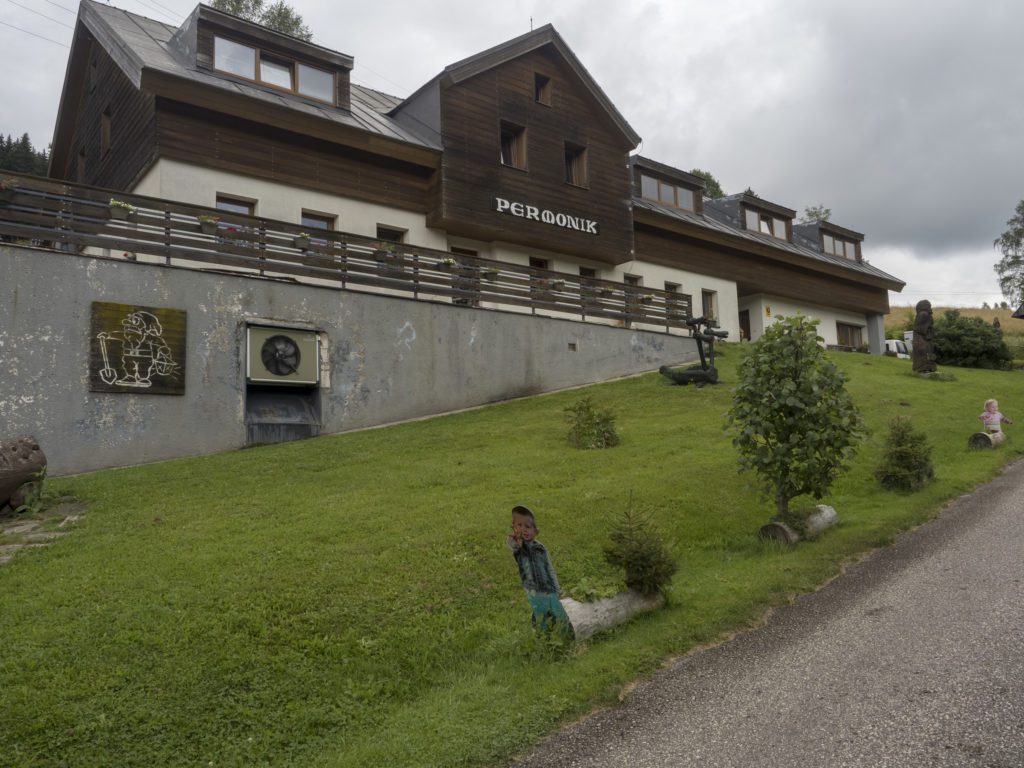
We crossed the border back to Poland without even noticing it, rushing down a small forest road.
– The route should turn left somewhere here – said Alicja.
We started looking for a path. Apparently, Komoot’s idea for the ideal route was to add some variation to our, so far, perfectly asphalted route. So now we were on a single track, navigating through roots, pinecones and other obstacles.
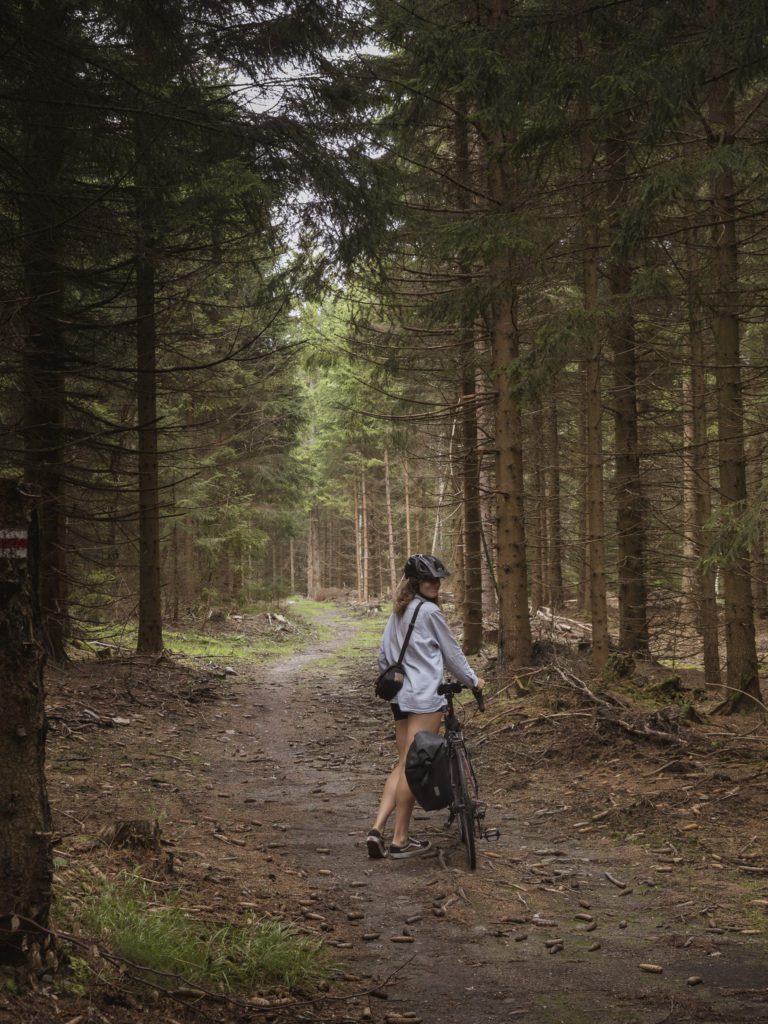
We stopped at a clearing to admire the dramatic panorama, with clouds shaped like a funnel above the valley where it was raining. While we were taking pictures, the first drops landed on my skin. Before I got my jacket out of the bag, it was pouring.
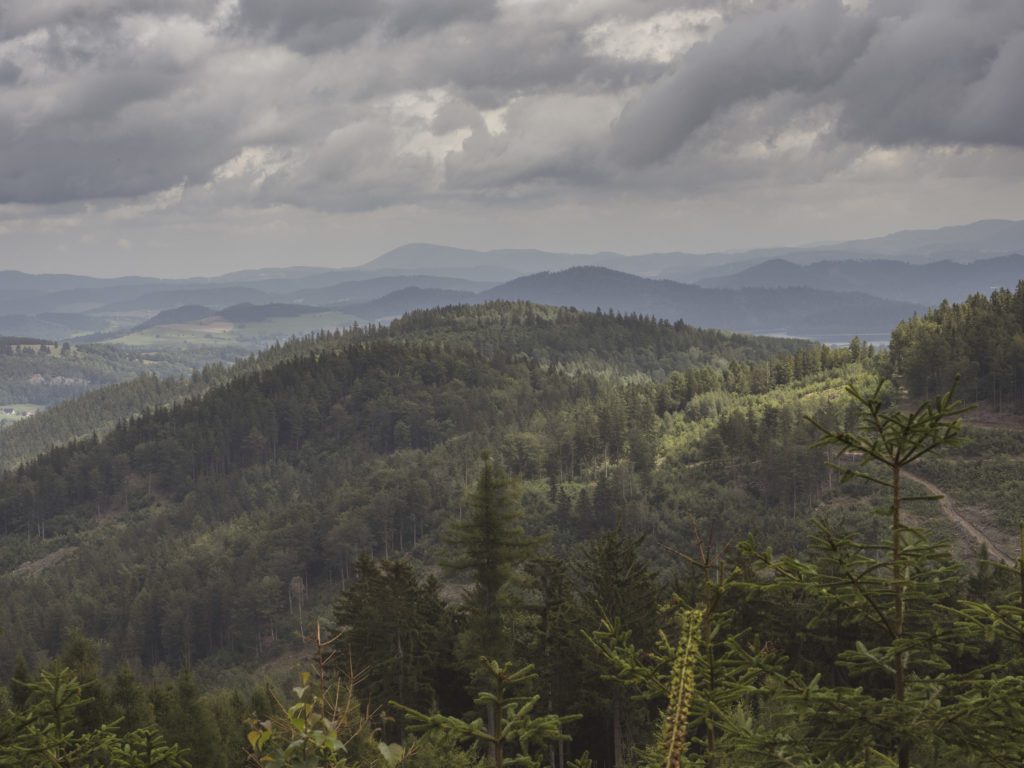
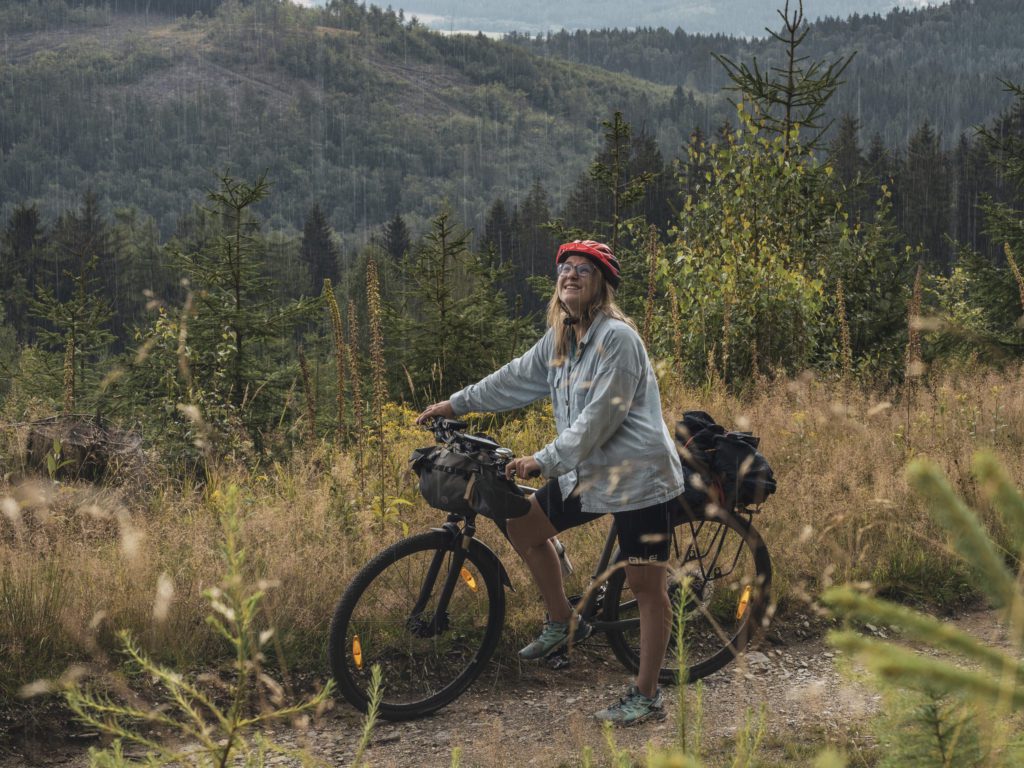
Escaping the rain
We rushed through the dark forest, and after a few kilometres, we arrived utterly soaked in Opawa. We found a bus shelter, where we studied the region map to kill the boredom while waiting for the rain to stop.
As if the weather wasn’t enough of a challenge for today, Komoot decided to spice things up for us again, suggesting a dirt road marked as a part of the ER-2 cycling route. At first, it was fine. I even enjoyed the splash my wheels made when going through massive puddles.
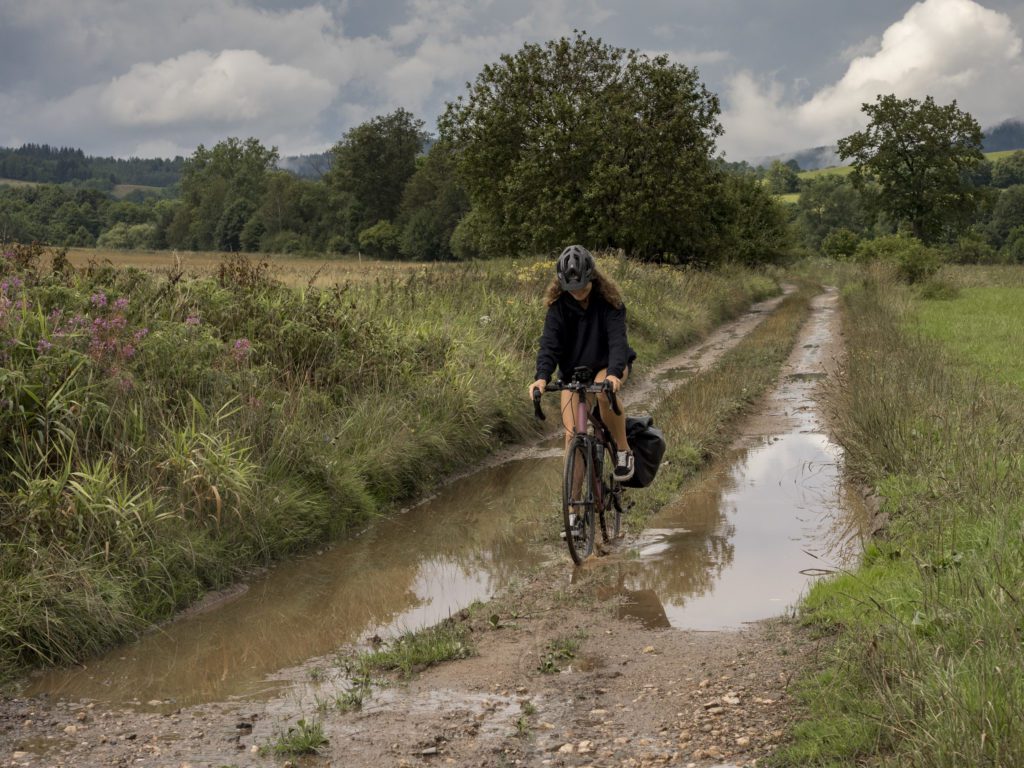
Soon, the wheel tracks turned into running streams, overgrown with grass and nettles, and the trail started shrinking. We lost at least 15 minutes cutting through the thicket, and because of that, another wave of rain caught us a few kilometres before Lubawka.
We wanted to get some food there, but the only restaurant with respectable reviews on Google Maps was full. I was sneezing and didn’t feel too well, so we decided to take a train and skip part of our planned route.
Four other people with bikes waited at the platform, so when we saw the tiny train approaching, our hopes for boarding started to shrink. Luckily, the conductor was okay with taking more bikes than designated spots as long as we figured out a way to fit in at the end of the train.
We changed the train once, and after 50 minutes, we were already in Wałbrzych. We could ditch our rain jackets – the sun was back, and cycling was finally pleasant again.
Hidden Gems in the Owl Mountains
One big attraction ahead of us was a 1.5-kilometre-long disused railway tunnel under Mały Wołowiec. This 144-year-old tunnel, one of the longest in Poland, has stood empty since the 90’s.
We switched our lights on and entered the portal. A dense mist surrounded us when we slowly rolled through the underpass. The ground was covered in large chunks of rubble, making it hard to cycle. It was an eerie ride in complete darkness, accompanied by the sound of dripping water. I was happy I wasn’t there alone—I would’ve probably freaked out.
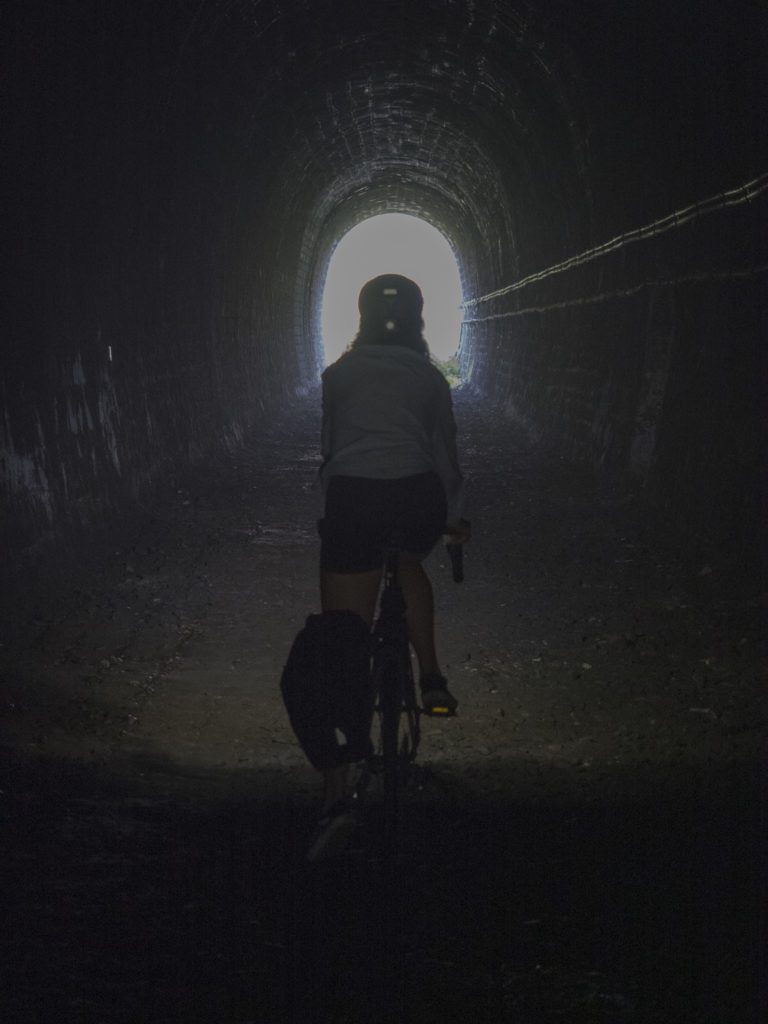
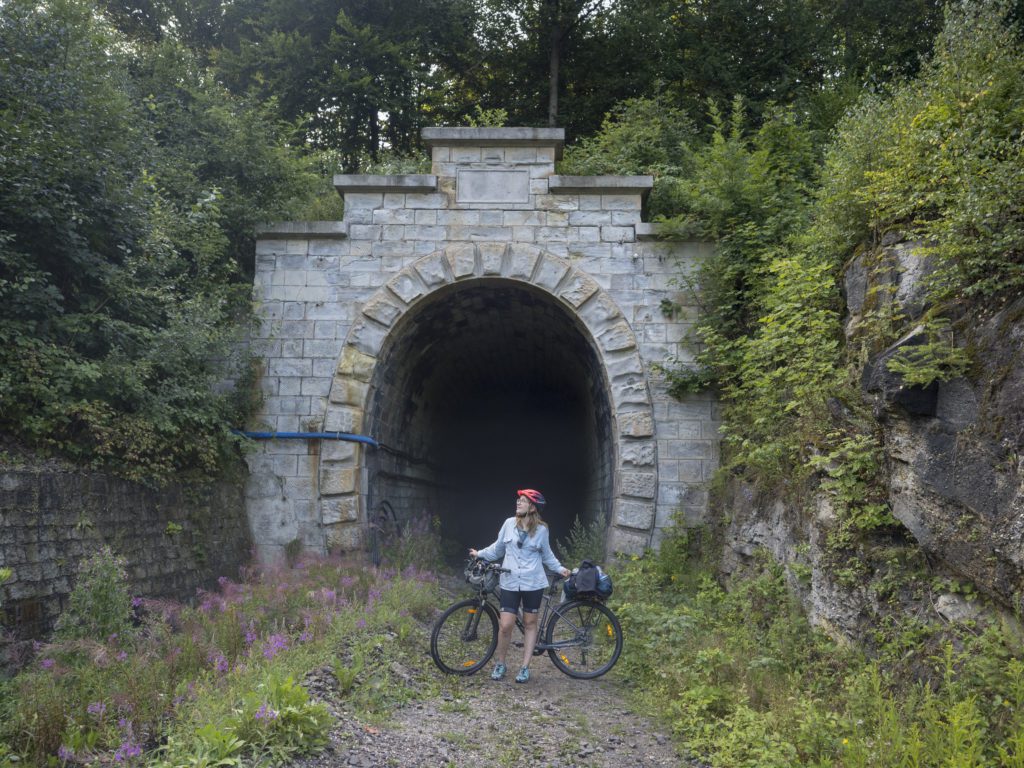
On the other side, the last rays of the sun painted the peaks with a warm glow. It was hard to believe we had only spent two days on the bikes, slowly pedalling up the hill to our wooden house. This weekend included an entire cycling summer: speeding down windy mountain roads, pushing the bikes up steep hills and through unrideable trails, watching the perseids, stopping at cute roadside cafes, sweating in the sun and soaking in the torrential rain. It was good to know I could have a true mountain cycling adventure on a whim, so close to home.
Our route
Highlights along the route
- The City of Rocks in Adršpach. Park your bike and go for a walk among astonishing rock foundations. The trail is 3.5 km long, but you should save about two hours to complete it and appreciate the views. It’s best to buy tickets online (they are cheaper than at the entrance). The entry fee is 130 CZK in the high season and 110 CZK in the winter.
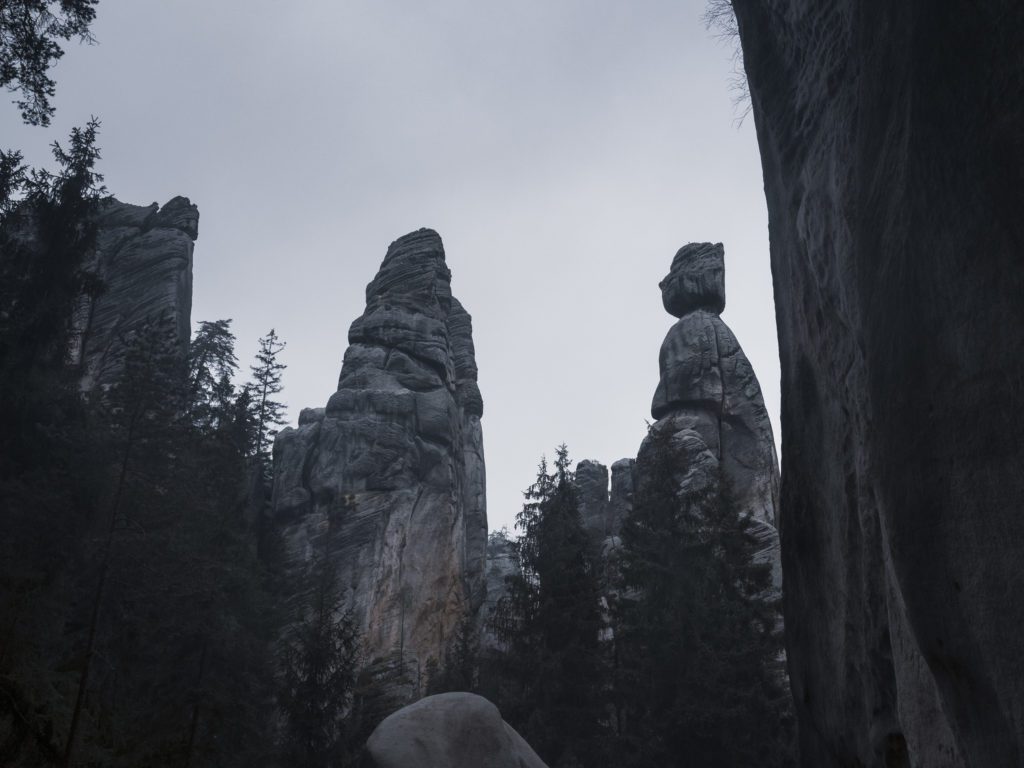
- The City of Rocks in Teplice. If you want to avoid the crowds, go for a walk in Teplicke Skaly instead of those in Adršpach. You can buy the tickets online. The route is 6 km long.
- The hairpins between Adrspach and Chvalec, a beautiful road through the forest, are among the best descents I cycled in central Europe. On a Saturday, the traffic was minimal, making the experience even better.
- Sněžka Mountain. The highest peak of the Czech Republic (1603 m a.s.l.) will accompany you for many kilometres of your trip. If you have the time, leave your bike in Pec pod Sněžkou and hike to its top to enjoy the fantastic views. You can also take a cable car from Pec pod Sněžkou. Don’t forget to check the weather forecast and pack a rain jacket and warm clothes. The conditions in the higher parts of the Giant Mountains can change rapidly.
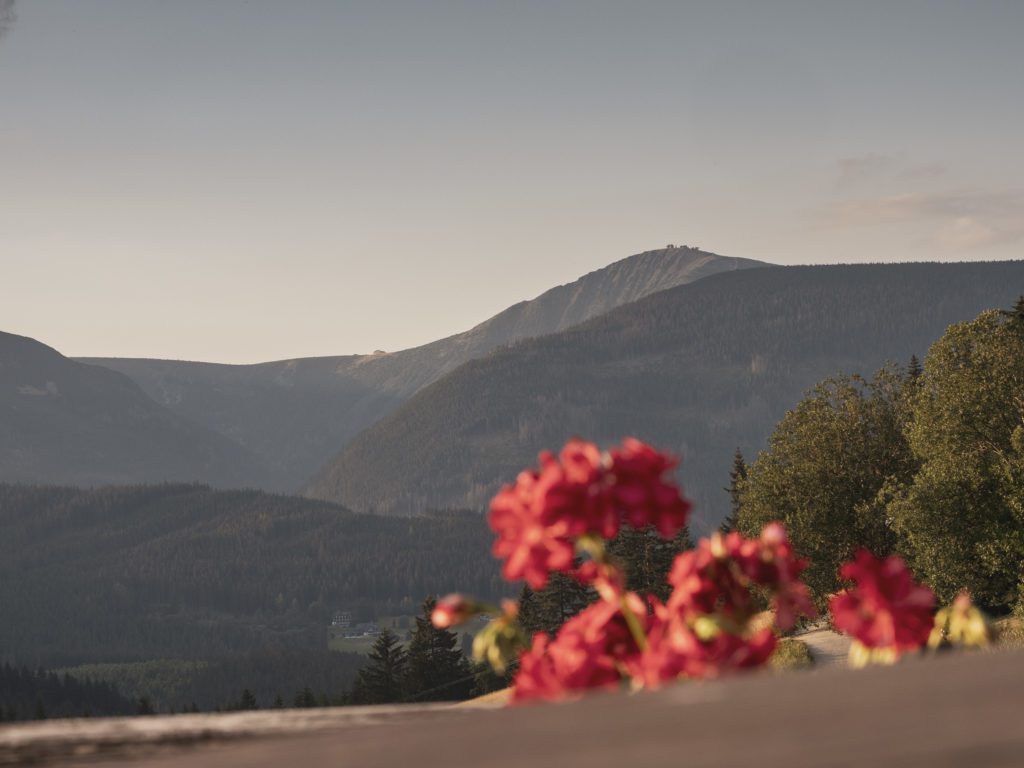
- The border crossing from Mala Upa to Poland is a beautiful mountain road with a fantastic, smooth descent through the forest. If you don’t want to go offroad, like we did, you can stay on road 369 towards Lubawka.
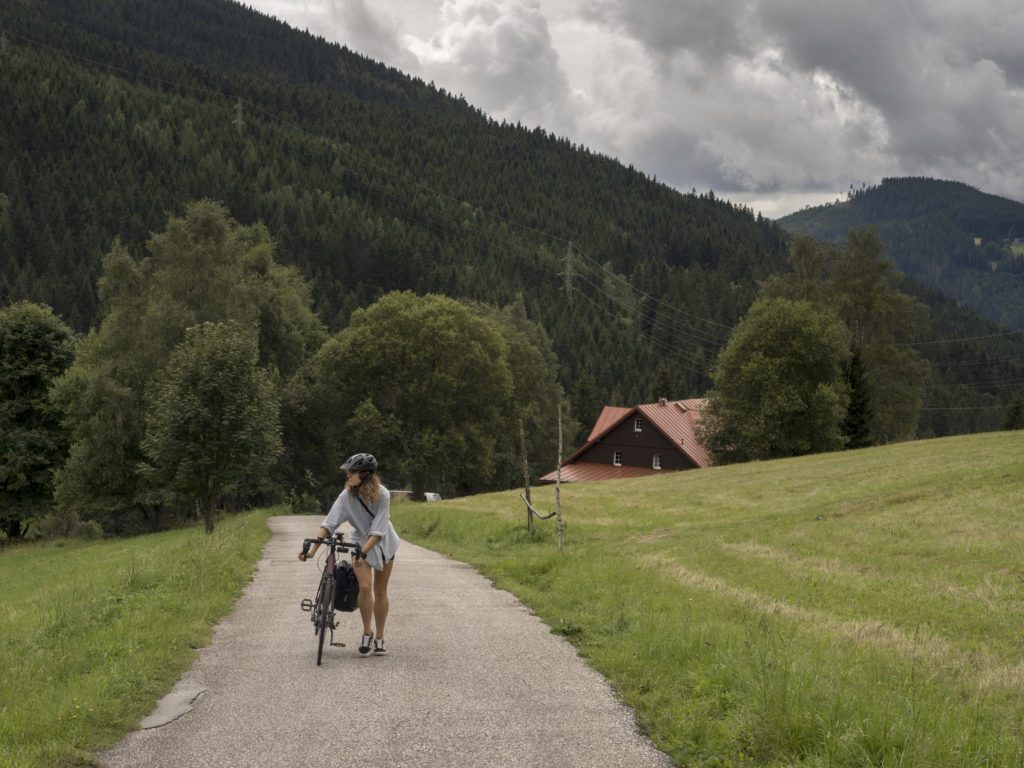
Cycling routes in the Giant Mountains
The Giant Mountains are a paradise for cyclists. The best cycle routes in the tallest mountain range include:
- The Krkonose Circuit. This 130-km long route allows you to see the Giant Mountains from each side and visit some of the most exciting tourist attractions in the area, such as the Wang Church in Karpacz, the Tree Top Trail in Janske Jazne and the Szklarska and Kamieńczyk Waterfall. It leads primarily on paved roads. You can find the map of the route here.
- The Giant Mountains Diagonal Route (Krkonosska diagonala). If you want to cycle through the highest parts of the Krkonose Mountains, this 69-km route with the highest point at 1340 m a.s.l. is perfect for you! Most of the track is paved, but you’ll have about 23 km of gravel and dirt tracks. Crossing the entire mountain range allows you to see some of the Giant Mountains’ most spectacular landscapes and immerse yourself in nature while enjoying excellent cycling infrastructure. You can find the map of the route here.
Check out this website for more cycling routes in the Giant Mountains.
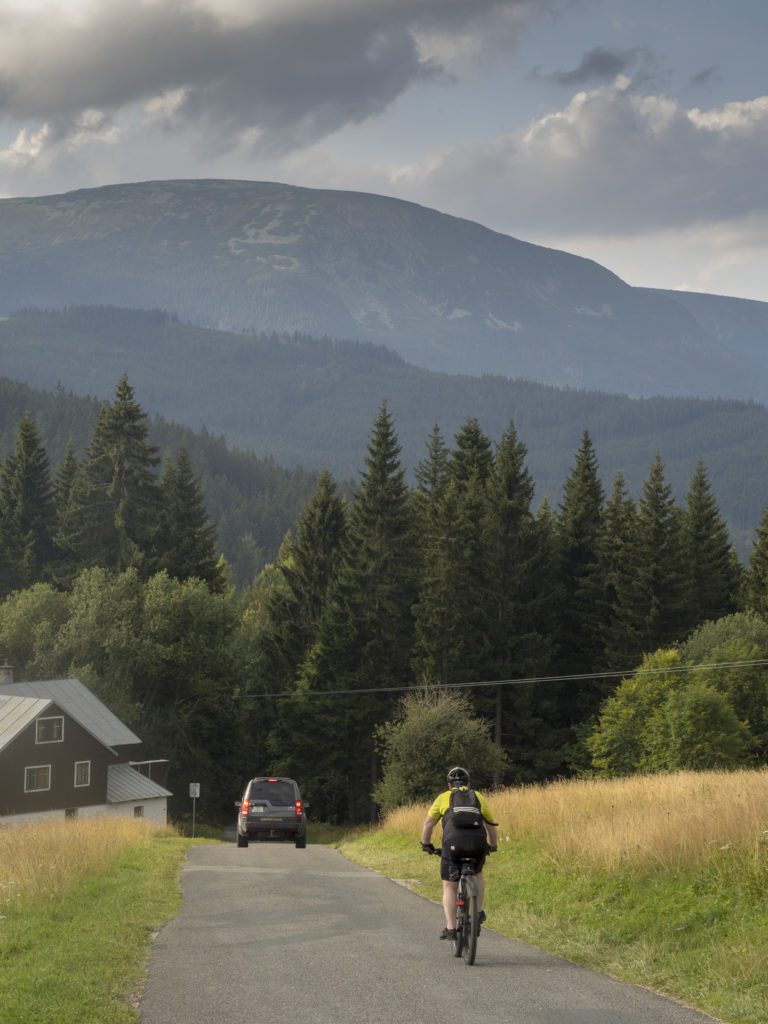
Transportation
The cycle buses
On the Czech side of the Giant Mountains, special cycle buses operate during the summer (usually between late May and late September). You can take your bike on such buses on these routes:
- Harachov-Pomezni Boudy
- Jilemnice-Horni Misecky
- Jilemnice-Bonecko-Vrchlabi
- Vrchlabi-Strazne
- Spindleruv Mlyn-Nova Paka-Hradec Kralove
- Hradec Kralove-Dvur Kralove-Kuks-Vrchlabi-Spindleruv MMlyn
- Trutnov-Babi-Zacier-Lampertnice-Trutnov
- Hradec Kralove-Upice-Trutnov-Mala Upa
These buses have space for at least six bicycles (and some have a large trailer that can hold 38 bikes!).
If you’re not in great shape, want to skip challenging climbs, or if the weather gets bad, these buses are a great option.
You can find the timetables here.
Trains
You can quickly arrive at the start of your route by Czech Railways, which allows travellers to take their bikes on a train on most routes.
On most trains, you must reserve your bike space in advance. You can do it online or at a ticket counter. You have to have both a reservation document and a ticket for the bicycle. The price depends on the distance, starting from 30 CZK (ca. 1,30 euros) for routes below 50 km and going up to 75 CZK (3,20 euros) for 350 km.
Read more about the conditions for bicycle transportation on the Czech Railways here.
If you’re travelling from Poland, you’ll likely need to use one of the Regio trains to reach the Sudeten mountains. You will pay 8,40 zł for the bicycle ticket regardless of the distance and route. Many local trains have special hooks for bicycles and low floors. The crew can deny you access to your bike if the train is full. You can buy the ticket for your bike at the station or, for most regional trail operators, on the polregio.pl website.
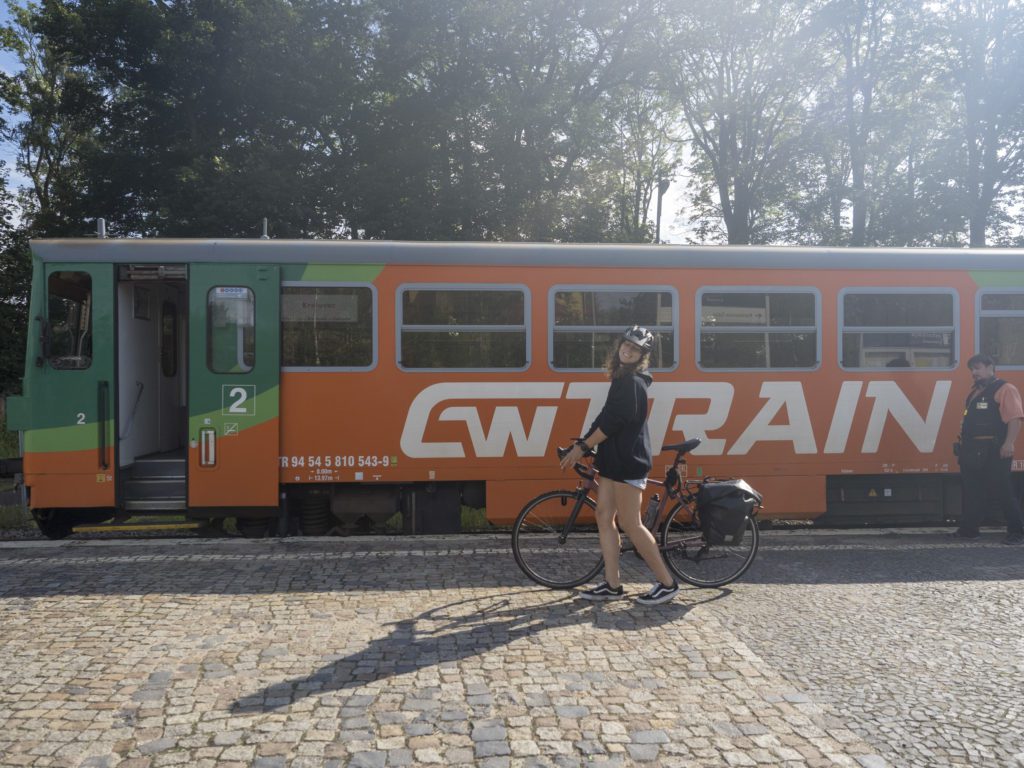
Be aware that on summer weekends, trains are prevalent among tourists with bikes. There’s no guarantee there’ll be space for your bicycle. Our train from Lubawka to Sędzisław technically had only space for three bikes, while six cyclists wanted to board. Luckily, the conductor was friendly and decided it was okay.
Accommodation
Camping in the Giant Mountains
Wild camping in the Czech Republic is illegal. Under no circumstances should you do it in the Giant Mountains National Park (it’s prohibited both in Czechia and Poland).
There are plenty of campsites on both the Czech and Polish sides where you can pitch your tent for the night.
Mountain hotels
Mountain hotels (Czech. bouda) offer affordable accommodation and tasty food. We stayed in Žižkova bouda in Pec pod Snezkou, paying 25 euros per person. Breakfast was included, we could safely store our bikes in the ski storage, and their restaurant served delicious fried cheese.

We travelled on a weekend during the peak summer season, and there was no problem finding a place to stay without booking in advance.
The weather and best time to cycle in the Giant Mountains
The best time to cycle through the mountains of Northern Czechia is from late spring to early autumn. The weather in the mountains can change very quickly, and from October to late April, you can even expect some snow on the higher altitudes. Always carry a rain jacket and some extra clothes.
